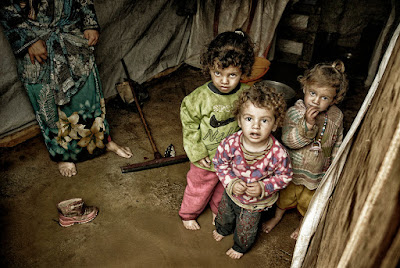Most boys want to play with cars and guns. If denied they will make their own. Swords and the need to fight seem to be hard
wired. But the story behind this picture
takes it a step further. He had been
asking his Mum for a land to air missile launcher, like the ones he had seen
back home, and now at night he snuggles up next to it.
I was on assignment in Lebanon during 2014. My aim was to tell some of the stories behind
the Syrian refugee crisis. Lebanon had
been the perfect choice for them, once a part of Syria the refugees could work without
a permit. But life is a daily struggle
to survive. Those out of the camps were
renting one room in an unfinished apartment building for $200 a week. Eight people in one room. And three things, fear, trauma and the constant
struggle to survive, had impacted everyone I met.
Most adults would not show their faces because their one
dream had been to return home, the fact that they had spoken to a journalist
would put their life at risk. They were
not concerned for their children, they would change as they grew and no one
would blame a child for having their photo taken.
But for many thousands the hope of a peaceful return has changed in recent
months. The country is in ruins, drought
has already disrupted agriculture and the only future seems to be a new start
in another country. Eleven million Syrian
refugees and right now thousands are trying to escape. The world needs to wake up. I do not want to predict the future on the
world’s stage, but this is the crisis of the hour.













